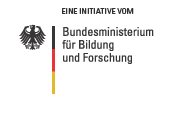Cordian Beyer: Hormone cocktail for stroke patients
-
 <ic:message key='Bild vergrößern' />
<ic:message key='Bild vergrößern' />
- Cordian Beyer heads the Institute for Neuroanatomy at the University Hospital of the Rheinisch-Westfälische Technische Hochschule in Aachen. Quelle: Peter Winandy
26.10.2011 -
“Time is brain” – so goes the maxim as applied to strokes. The faster that blood flow can resume, thereby returning the oxygen supply to the brain, the fewer cells die off. But time will inevitably pass until treatment can be administered. Using a cocktail of female hormones, Cordian Beyer from the University Hospital of the Rheinisch-Westfälische Technische Hochschule Aachen (RWTH) has succeeded in reducing damage to nerve cells in the wake of an attack by up to 70 percent. The experiments were conducted in mice. Clinical studies to investigate this effect on humans are likely to begin in the coming years.
The hormones in question already made an impression on Cordian Beyer during his biology studies at Ulm. “It's fascinating: In a larva, it’s a hormone that triggers the transformation into a butterfly. But not only that. Hormones are at work everywhere.” Also later in his career, the cell researcher never lost his interest in the metabolism. The beginnings of his current work can be traced back to his time as a graduate student in the group headed by Christof Pilgrim. Back then, the emphasis was on the therapeutic effects of sex hormones in infants. Sex hormones are necessary for certain organs to mature in the embryo during the last three months of pregnancy. Extremely premature infants often developmental disorders and disease because of a lack of necessary hormones from the placenta. This can especially affect the development of the airways and brain. In Ulm, Beyer studied whether a specific hormone treatment could mitigate these issues.
Developing animal models for stroke
Since 2005, Beyer has been Director of the Institute for Neuroanatomy at the Hospital of the RWTH Aachen. He arrived at his current post with a ready-made enquiry. “How can hormones protect the brain tissue, and can they stimulate the regeneration of parts that are damaged?” Beyer built up his team whilst initially serving as acting head of Anatomy at the University Hospital. “For a time, I was the only anatomist here at the University Hospital. At the same time, we were developing animal models for stroke, multiple sclerosis, and other diseases.
Immune cells in the brain known as microglia appear to play an important role,” says the 51-year-old. These control inflammatory processes in the brain tissue by working together with immune cells from blood vessels. When Beyer administered high doses of hormones to rats who had suffered a stroke, he was able to observe two things. “Firstly, the hormones inhibit the immune cells; secondly, they ensure that damaged nerve cells are better able to survive.” This was the first time that this had been observed in MS patients. “The experts are now fairly certain that women suffering from multiple sclerosis during pregnancy suffer fewer relapses,” says Beyer. This appears to be a result of the elevated hormone levels. “Hormones have an important protective function in these neurological diseases,” is one conclusion of the cell researcher.
Nerve cells already damaged beyond repair
Stroke is the third leading cause of death next to cancer and heart disease, and remains the leading cause of disability. In addition to paralysis, patients suffer ongoing loss of feeling, balance, and perception, as well as visual disturbances and/or language disorders. The extent of the consequences of a stroke will depend significantly on how fast the patient receives treatment. But one problem remains: There are two types of strokes, each requiring different treatment. Either a blood vessel is clogged, thereby blocking the oxygen supply to the brain, or blood breaks out of the blood vessels and enters the brain tissue. The blockage of vessels is described by doctors as cerebral infarction, the breaking out as cerebral haemorrhage. Thus, a diagnosis must first be carried out to prevent mistreatment, but during this period, nerve cells can already become irreparably damaged.
This is where Beyer’s neuroprotective hormone cocktail comes in. Beyer has calculated that the maximum effect is apparently achieved with a unique combination of estrogen and progesterone. Estrogen and progesterone are female sex hormones, which are regularly available – and in particular increased quantities – during menstruation, and at specific stages during pregnancy. At these times, hormone levels increase by many multiples. “The female body, but also the embryo in the womb, is literally flooded with hormones,” says Beyer. “This enables the implantation of the fertilised ovum and its maturation, and prepares for later milk production.”
Clinical trials to begin soon
However, the extent to which hormones can be applied as a treatment, as well as the possible side effects of high-dose hormone treatments, can only be demonstrated though detailed studies lasting some years. A company has already patented a process to intravenously administer the hormone mix in a solution, and plans are likewise underway to begin a corresponding clinical trial.
Cordian Beyer, for whom much of the initial work is completed, will function as a consultant for the project. “I see myself as a basic scientist,” he says. Since the beginning of the study, the focus has been on understanding the effects of hormones in the body. “This is important in order to understand side effects of corresponding drugs.” Here, there will be no end of interesting research to be carried out. For example, the precise role played by hormones in the formation of new vessels remains an open question. “I could do this research into old age without it getting boring,” says Beyer, laughing. With a family, three children, and a passion for regular games of football with friends, this is unlikely to change soon.
© biotechnologie.de/cm



